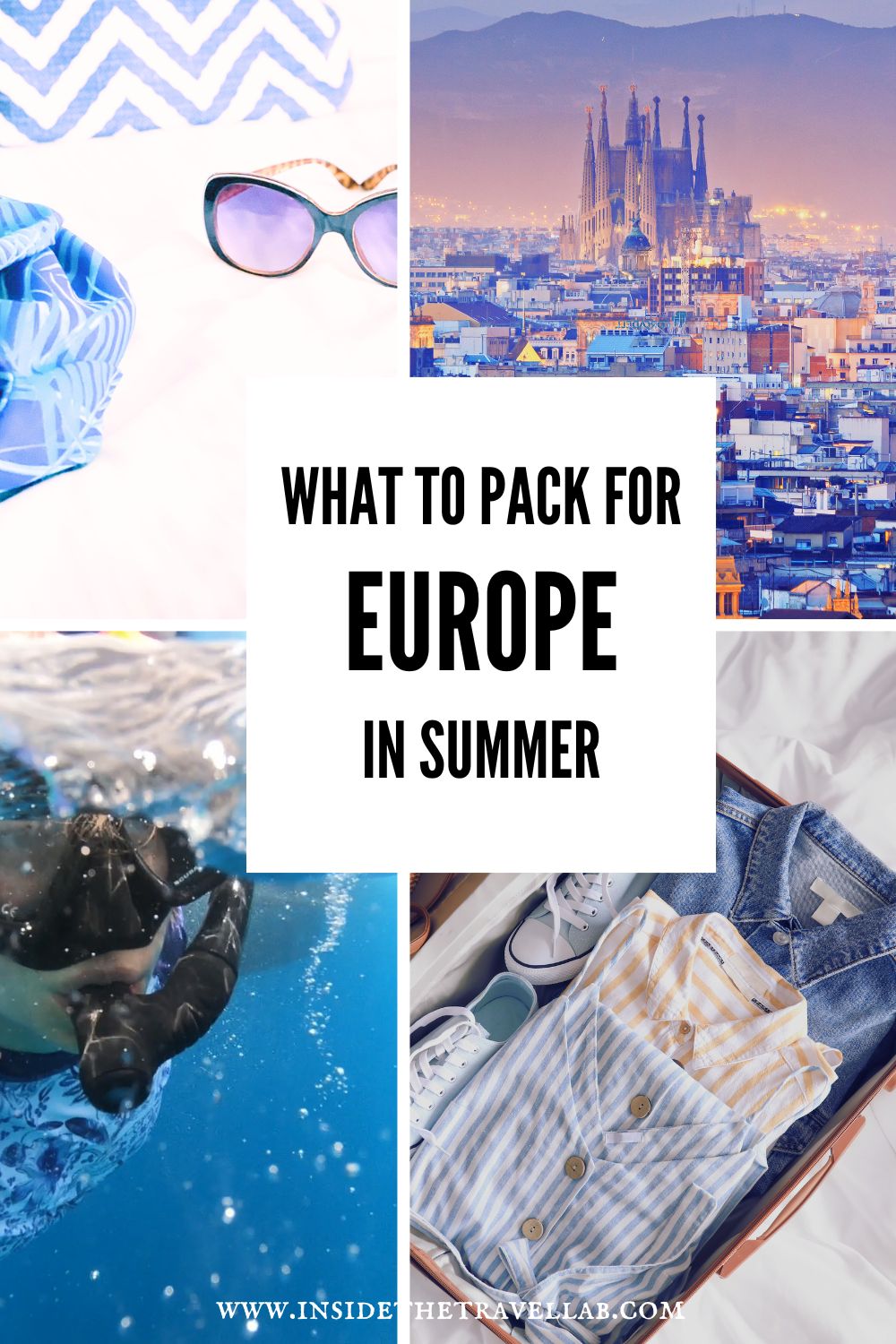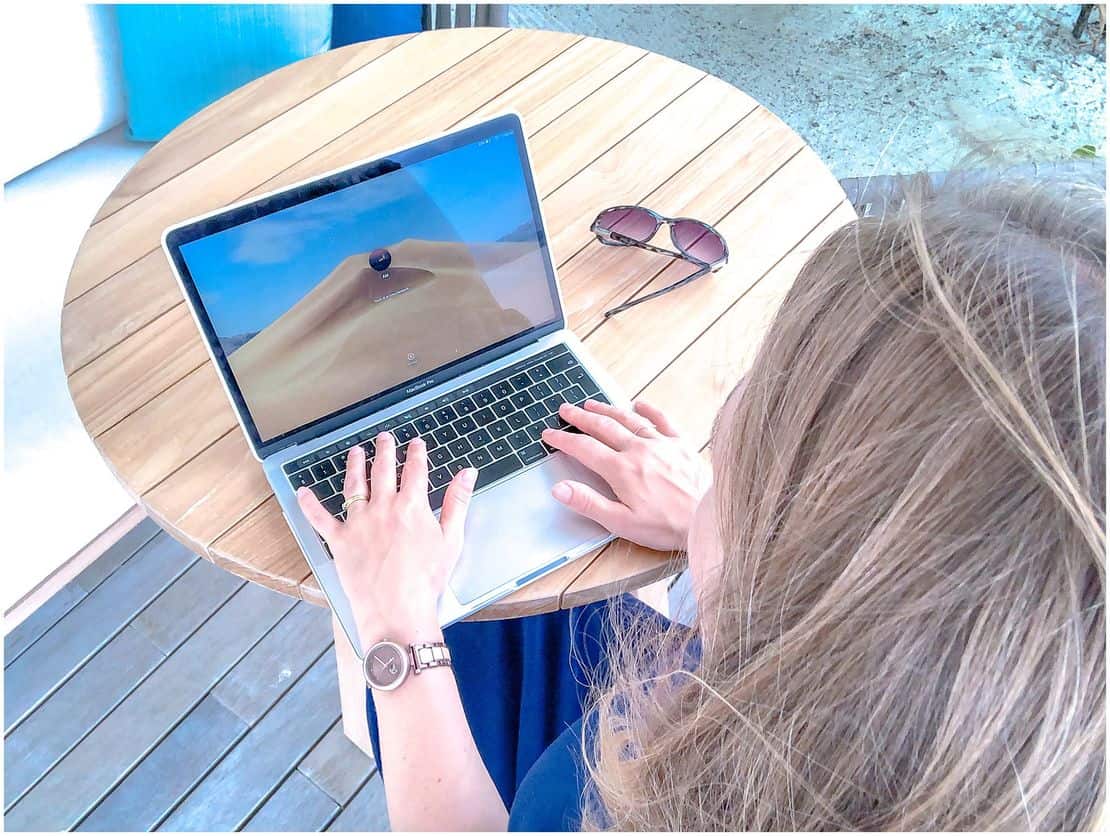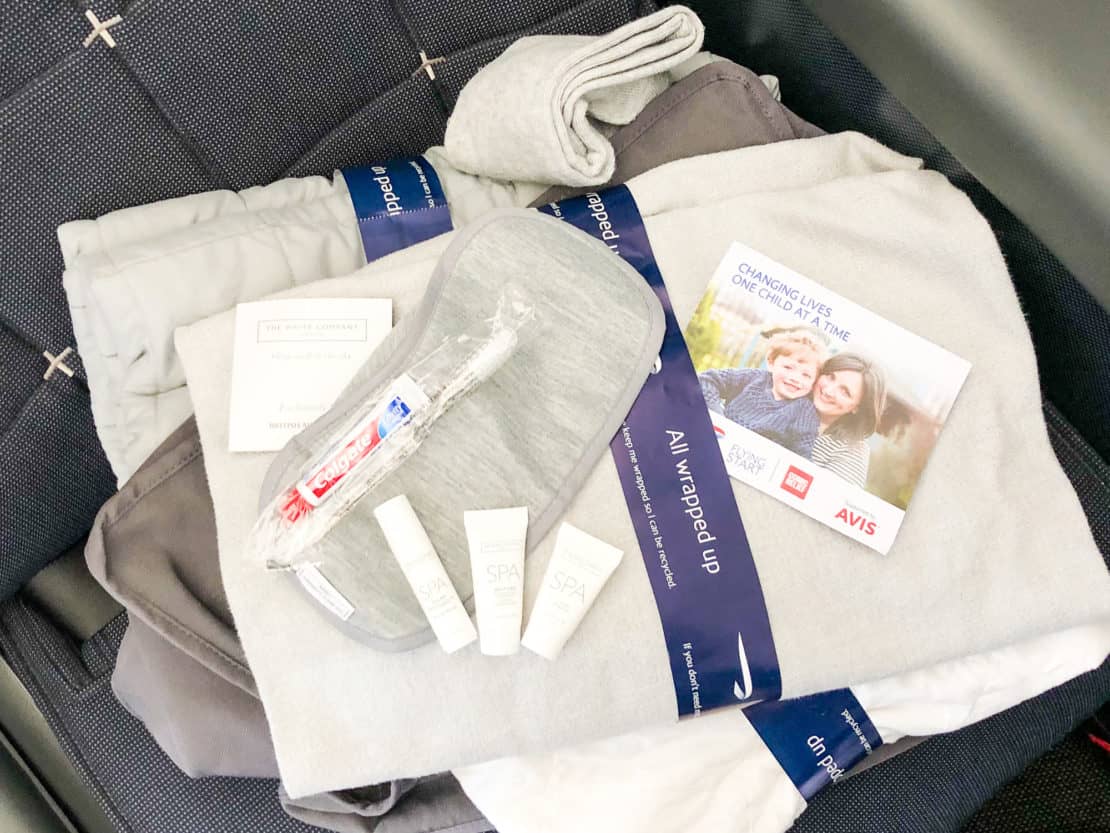Make sure you have everything you need with this guide on how to pack for Europe in summer for the first time.


What to pack for summertime in Europe
The late evening glow over Parisian café terraces, the salty breeze from the Greek islands, the clatter of shoes on cobbled Italian piazzas… The downpour or drizzle of Ireland and England and the snow-tinged glaciers of Austria. If I’ve learned one thing when it comes to packing for Europe in summer, it’s that you need to check local conditions first. And even then, you need to have a flexible wardrobe.
You might bask in thirty-five degrees along the Mediterranean coast and, within a few train rides, find yourself shivering in the Scottish Highlands or hiking at altitude in the Dolomites. If you want to move smoothly between regions, you’ll need to pack cleverly. Too little, and you’ll be uncomfortable. Too much, and you’ll struggle with weight restrictions, overhead luggage racks, and the simple fact of moving from place to place.
So let’s learn from my mistakes and provide you with the perfect list for a summer trip.
Start with the right bag
Over the years, I’ve travelled through Europe in summer with every kind of luggage imaginable: hard-shell suitcases, featherlight weekend bags, oversized totes, and even the odd designer handbag crammed with more than it was ever intended to hold.
But there is one piece of kit that consistently makes sense for most trips: a good quality hiking backpack
It may sound a little dramatic to say that choosing your luggage can make or break your trip. But anyone who has tried to wheel a suitcase across uneven cobblestones in Rome, lug one onto a crowded train in France, or navigate the narrow staircases of old Lisbon guesthouses will know that a poor choice of bag quickly becomes a constant irritation.
Even if you rely on a wheelie for your main luggage, it’s handy to have a hiking backpack for the day. And if you can manage the weight of a 65L backpack then all power to you. Designed to distribute weight evenly across your back and shoulders, a backpack leaves your hands free for train tickets, maps, photos, snacks, or simply enjoying the view. The same backpack that fits snugly into the overhead racks of European trains can double up as a day pack for a countryside hike, whether that’s in the Black Forest of Germany or on a clifftop walk in Portugal.
Of course, not everyone enjoys carrying luggage on their back. If you know your itinerary involves little more than city pavements and hotel elevators, then a small wheeled suitcase may do the trick. But for multi-stop adventures — and especially if you plan to venture into nature at any point — the hiking backpack remains one of the most versatile and reliable options.
Over the years, I’ve written lots of gear guides and luggage reviews, so it’s a good idea to start looking there.
With the luggage sorted, the next step is knowing what to put inside.


The summer clothing formula
Packing for a European summer doesn’t mean packing half your wardrobe. The secret is versatility. Choose lightweight, breathable fabrics that can be layered up or down depending on the climate, and opt for a colour scheme that allows mixing and matching without thought.
For women, two or three versatile dresses can cover most occasions: sightseeing, dinners, even the odd formal event if accessorised properly. Men may find the equivalent in a few lightweight shirts that work equally well untucked with shorts or neatly buttoned with trousers. Add in a couple of pairs of shorts, one pair of lightweight trousers, and a cardigan or jumper for cooler evenings.
Don’t forget a packable waterproof jacket. European summers are notorious for sudden thunderstorms, wherever you are. Cities such as Munich and Vienna can see heavy afternoon downpours in July, while London’s drizzle is famous year-round. A thin jacket folds easily into your bag yet spares you from being soaked and miserable.
Dress codes vary across Europe, being more relaxed in the UK and Ireland and snazzier in France, Italy and Spain. I’d always recommend packing at least one outfit that will work for a fancy dinner, and make sure you have more than just white sneakers.
Also, bear in mind that many religious sites (such as the Vatican) will only let you in if you are modestly dressed. Make sure you have at least one outfit that covers you from ankle to wrist to be sure. Long sleeved shirts and linen trousers or linen dresses work well here.
The idea is not to prepare for every eventuality but to prepare for the likely ones. A simple capsule wardrobe makes it easier to get dressed each day and ensures you don’t lug around items you’ll never wear.
Here are a few examples to get you started:
Sample Capsule Wardrobe for Europe in Summer
Not sure how to put together a travel wardrobe? An example always helps. Here’s where to start when packing for your Europe trip.
Women
- 2 lightweight dresses (one casual, one that can be dressed up with accessories)
- 2 pairs of shorts (linen or cotton)
- 1 pair of lightweight trousers (neutral colour)
- 3–4 tops (mix of short-sleeve shirts, T-shirts, or blouses)
- 1 cardigan or light jumper for cool evenings
- 1 packable waterproof jacket
- 1 scarf/pashmina (for warmth, sun, or modesty in churches)
- 1 pair of comfortable walking shoes/trainers
- 1 pair of supportive sandals (smart enough for evenings)
- Optional: 1 pair of lightweight hiking shoes if heading into nature
- 1 swimsuit (with a quick-dry travel towel)
- Underwear for a week, then wash and rotate
- 1 set of sleepwear
- Minimal accessories: small crossbody bag, sunglasses, sun hat
Men
- 2 pairs of shorts (linen or cotton)
- 1 pair of lightweight trousers or chinos
- 3–4 shirts (mix of short-sleeve and lightweight button-ups)
- 2 T-shirts (neutral colours that layer well)
- 1 jumper or light cardigan for cooler evenings
- 1 packable waterproof jacket
- 1 scarf or buff (handy for warmth or sudden weather changes)
- 1 pair of comfortable walking shoes/trainers
- 1 pair of sandals (with straps, suitable for walking and casual dining)
- Optional: 1 pair of lightweight hiking shoes if heading off-road
- 1 swimsuit/shorts
- Underwear for a week, then wash and rotate
- 1 set of sleepwear
- Sunglasses, sun hat, slim day bag or satchel
Shoes: the non-negotiables
If you only learn one thing about European travel from this article, make it this: pack comfortable shoes.
Europe is awash with cobblestone streets and those quaint and picturesque views often mean that even cars and taxis can’t help you to your hotel room with your luggage.
Shoes are the one area where travellers consistently make mistakes. It is tempting to pack multiple pairs to cover every possible activity. But footwear is heavy, space is limited and luggage storage on trains is unforgiving. Choose carefully.
First and foremost, you will need comfortable walking shoes. European cities are best explored on foot, but pavements are rarely smooth. Cobbles in Prague, uneven stones in Pompeii, steep staircases in Porto: all of these call for shoes that offer support. Trainers or low-profile hiking shoes work well here.
Second, pack a pair of sandals. They are essential for hotter days and can work for both sightseeing and evening meals. Choose a pair with proper support and straps rather than flimsy beach flip-flops and that way they can pass as a smart evening shoe for dinner.
If your itinerary involves genuine hiking or long countryside trails, consider adding a lightweight pair of hiking shoes or boots. Otherwise, stick to two pairs and rotate them as needed. Your back will thank you.


Accessories that earn their place
A sun hat and sunglasses are essential across southern Europe and surprisingly handy even further north.
The long summer days in Scandinavia can be dazzling, and mountain glare is not to be underestimated. A lightweight scarf or pashmina is indispensable: it offers protection from the sun, warmth in the evening, and modesty in religious sites such as cathedrals and mosques.
A reusable water bottle will save money and reduce waste. Many European cities have public fountains with drinkable water, particularly in Italy, France, and Switzerland. A small crossbody or anti-theft bag is worth the investment for days spent in busy cities such as Barcelona or Rome, where pickpockets remain an unfortunate reality.
A reusable shopping bag is both practical and eco-friendly, especially as many European supermarkets charge for plastic bags.


Tech and travel essentials
At a minimum, bring a universal travel adaptor that works across Europe. While most of the continent uses the standard two-pin plug, the UK and Ireland still rely on three-pin sockets, so I’d always recommend having a universal one.
A portable power bank is a lifesaver for long travel days when you need your phone for maps, tickets, and photography. E-readers are lighter than books and store dozens of titles for train journeys or beach days. Noise-cancelling headphones are helpful not only for planes but also for long train rides or noisy hotels.
With all that said, most European countries are pretty well stocked so if your tech breaks down, you can usually find a way of getting it fixed as lon gas you can make it to a major city.


Toiletries and health
Most European pharmacies are well stocked, but it’s wise to bring the basics. Sunscreen is non-negotiable, particularly with the intensity of Mediterranean sun. Opt for a high SPF and reapply regularly. A small first aid kit with plasters, painkillers, and insect repellent is a great idea to save hassle. Pack your favourite motion sickness medication if you need it.
Solid toiletries save space and avoid the stress of liquid restrictions on flights. Shampoo bars and solid soap last longer than travel-sized bottles and reduce the risk of spills.
Most importantly, make sure you have copies of paperwork for prescription medications ready to show airport security and always keep the meds themselves in your carry-on bag or personal item.
Also, if you rely on wearing contact lenses then make sure to check out our guide on how to fly with contact lenses here.
Bonus tips for smooth summer travel
A few small tricks make all the difference.
- Lightweight clothing dries quickly, so you can wash items in hotel sinks or laundrettes and reuse them, rather than carrying a fresh outfit for every day.
- Modesty matters in certain places. Churches in Italy, Spain, and Eastern Europe often require covered shoulders and knees, so pack something suitable.
- Leave space for souvenirs. Whether it’s wine from Bordeaux, ceramics from Portugal, or chocolate from Belgium, you’ll likely want to bring something home.
- Remember that Europe is not one climate zone. Portugal in July will feel utterly different from Norway. Check the average temperatures for each stop on your itinerary before you pack.
- Avoid withdrawing cash on credit cards but do take at least one with you for financial protection for big ticket items. Look into a cost effective debit card for paying in local currency.
- Buy an eSIM for your mobile or cell phone to save on roaming charges.
- Keep a copy of your travel insurance policy on your phone and in the cloud.
- Don’t bother with a money belt – it’s too much hassle. Just try to avoid carrying around a lot of cash.
- Make sure you have some warm layers like a light sweater or jacket. The temperature can drop at night quite suddenly.
- To keep your bag organised, consider packing cubes. They separate clothes into categories and make it easier to find what you need without rummaging through everything you own.
- Keep hold of coins and cash if you plan on using a washing machine at a self-service laundrette.
The philosophy of packing light
Packing for Europe in summer is all about the following philosophy: the lighter you travel, the easier it is to switch plans, hop on a train, or wander down an unexpected street without feeling encumbered. You become less dependent on taxis, porters, or storage lockers.
Travelling light also gives mental clarity. Instead of wasting energy deciding what to wear each day, you know that everything in your bag works together. You can focus on the experiences instead: the first taste of pistachio gelato in Florence, the sound of bells from a Viennese church, or the cool shade of a Spanish courtyard.
One last thing…
Packing for Europe in summer is both easier and harder than it first appears. Easier because you don’t need bulky coats or winter gear. Harder because the climates and cultures vary so widely that it’s tempting to prepare for every possibility.
The best approach is balance. A hiking backpack gives you flexibility. A capsule wardrobe keeps you comfortable and stylish. Good shoes protect your feet. Small accessories and tech streamline the details.
And leaving space in your bag (and in your mindset) allows you to enjoy the spontaneity that makes travel so rewarding.
So pack light, pack smart, and step into your European summer with confidence. And for more good news? You can find our full, ultimate packing list here.

